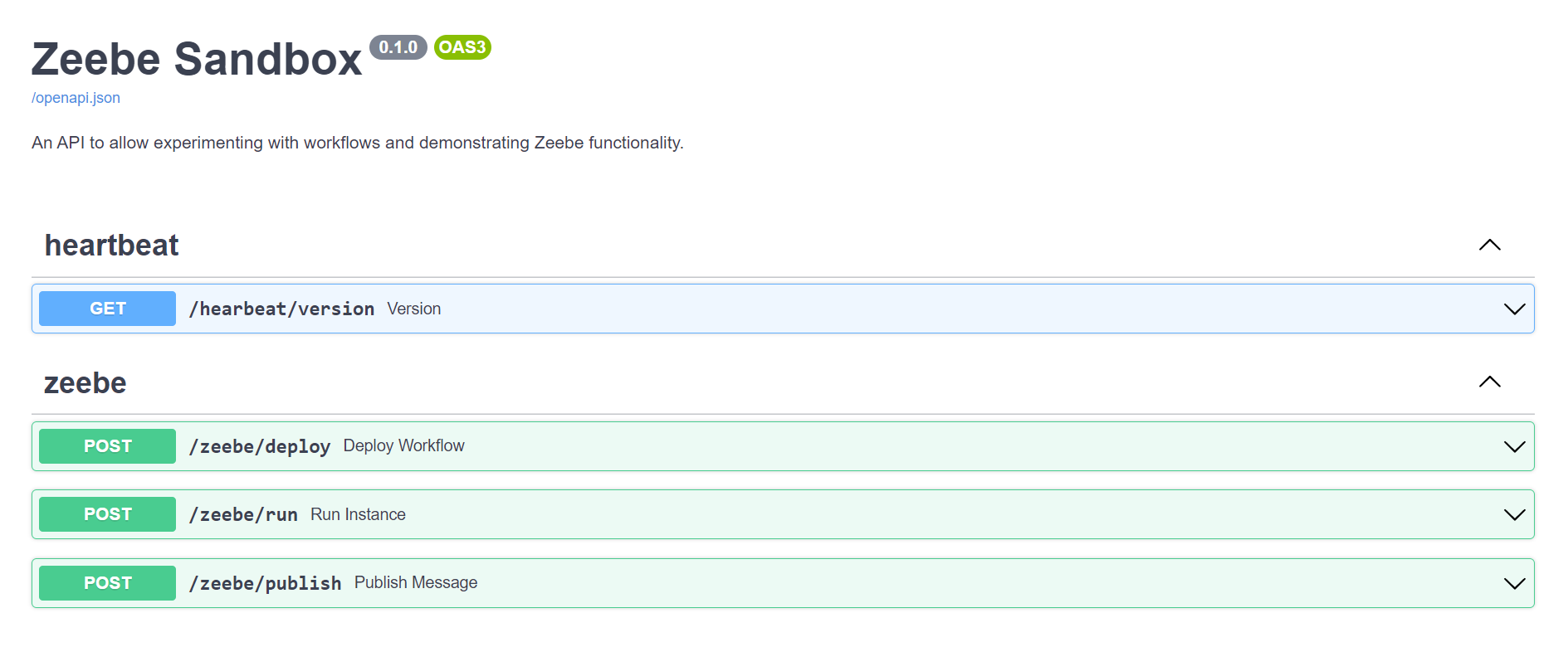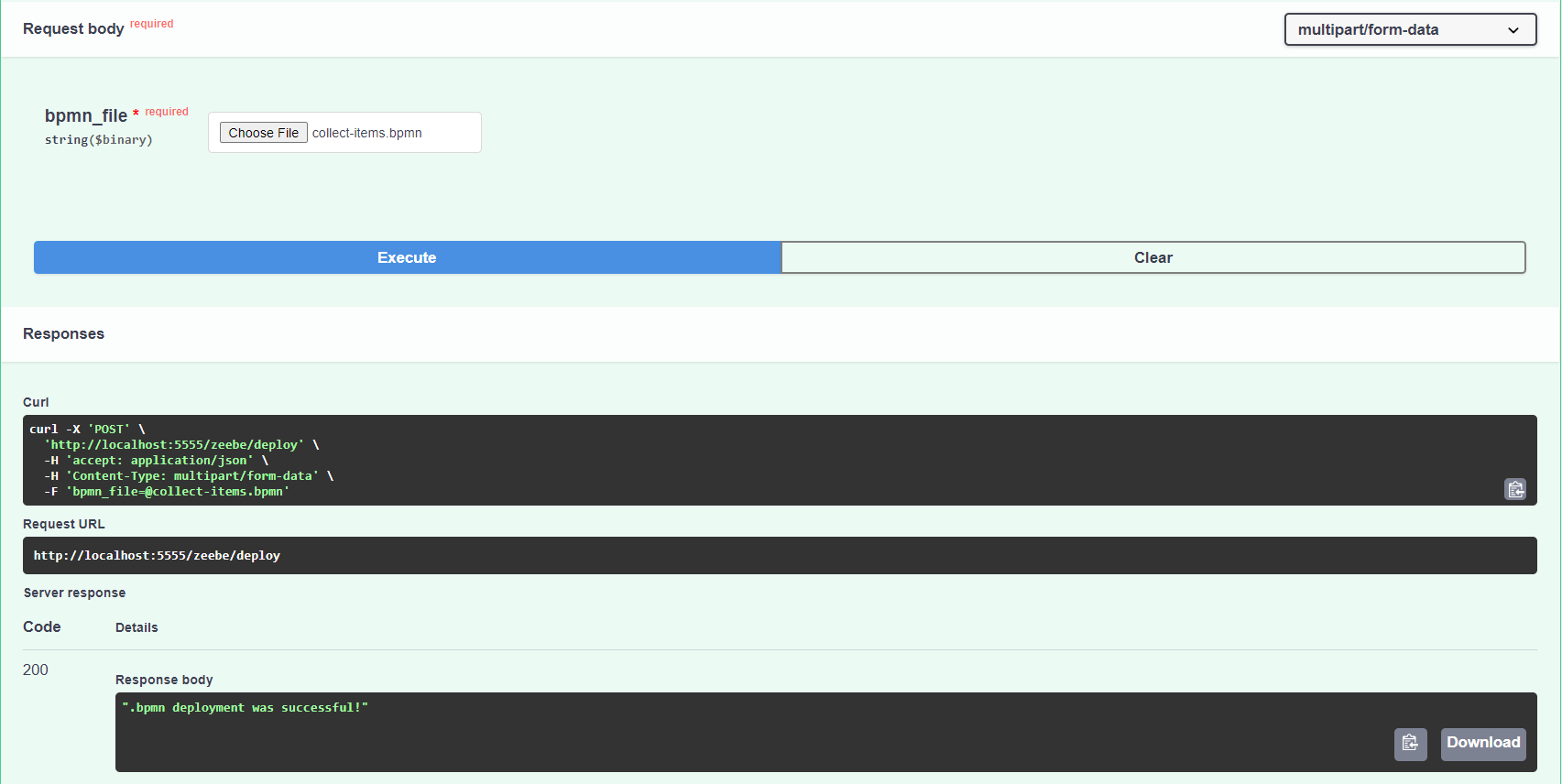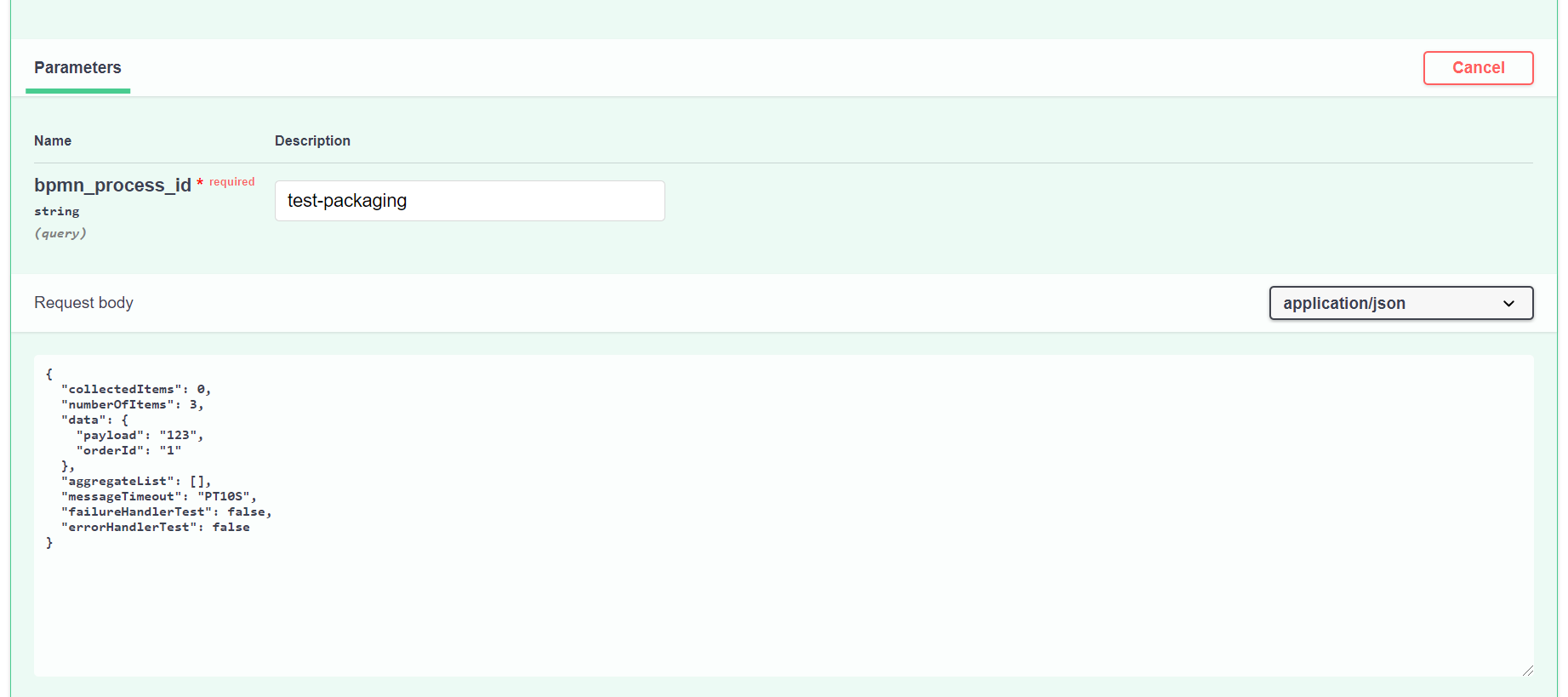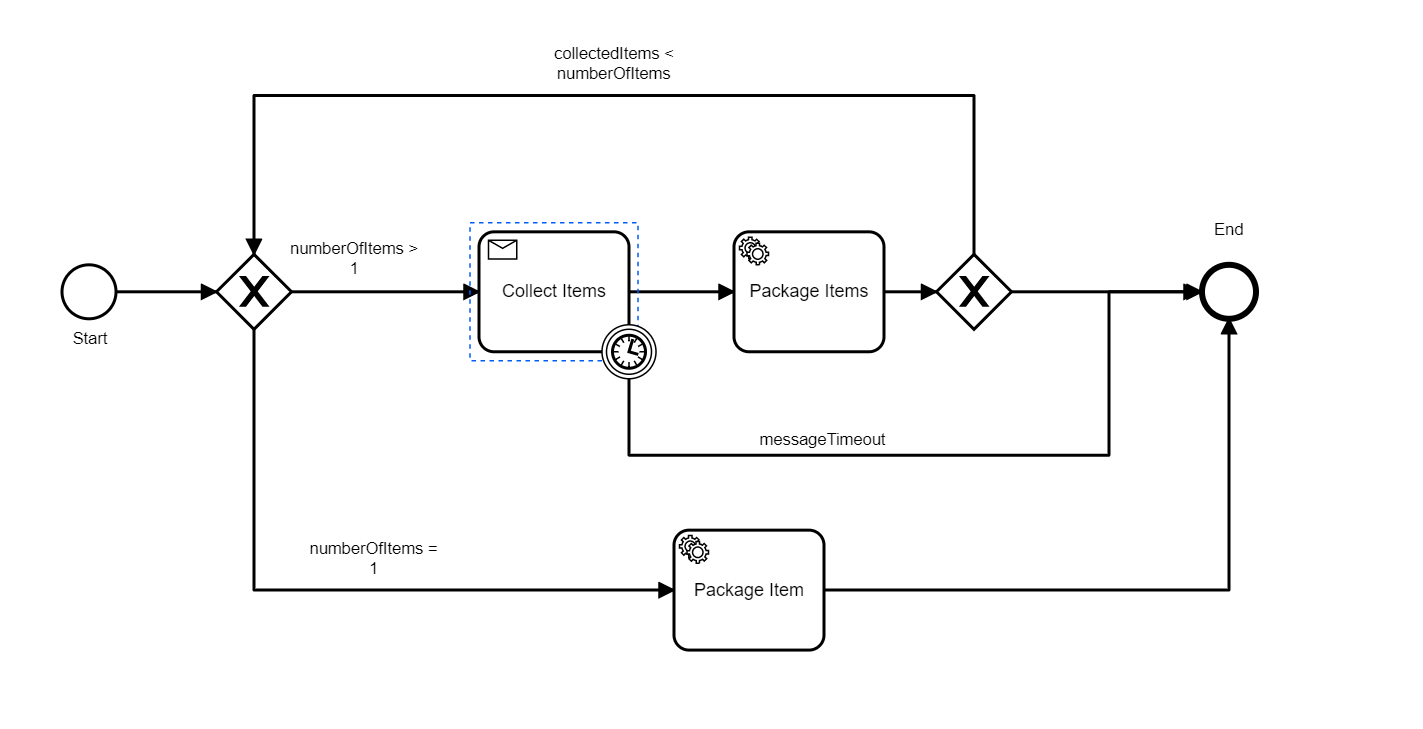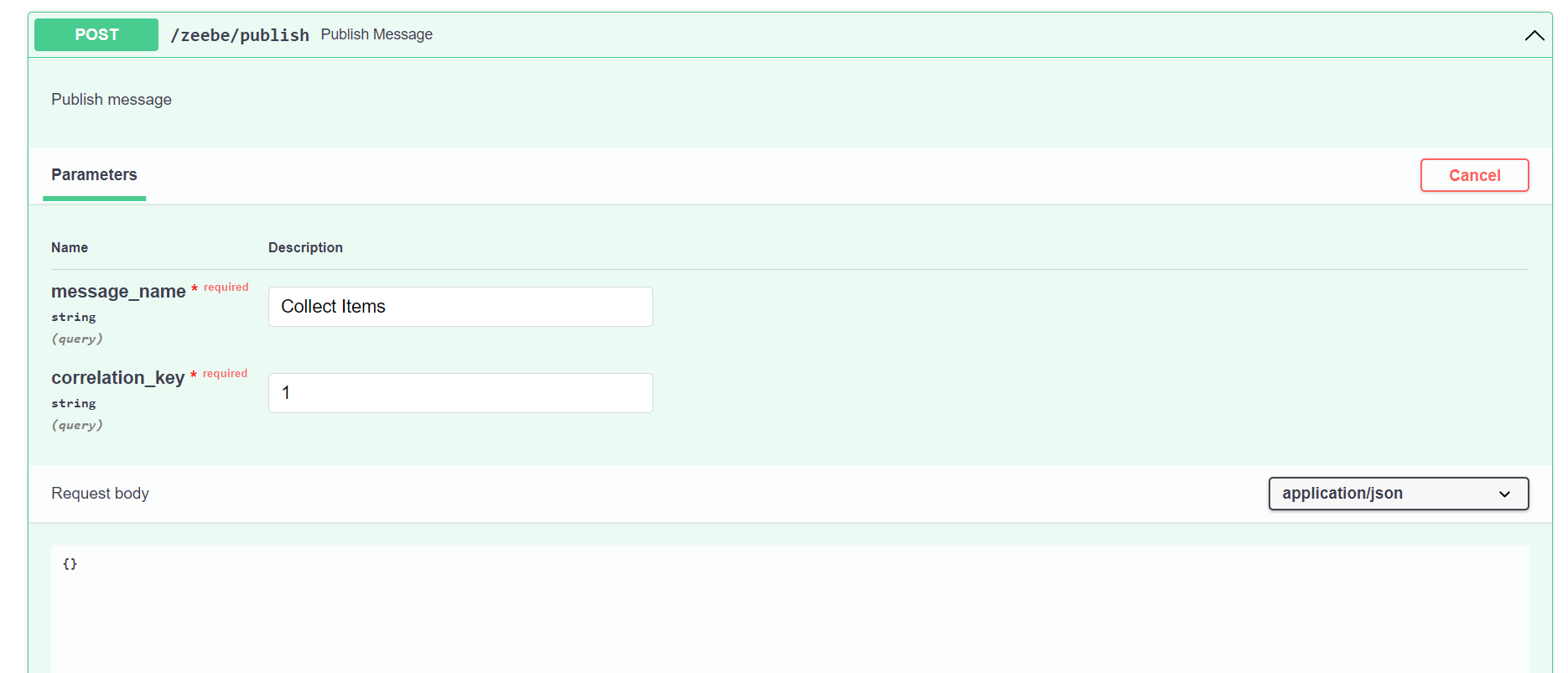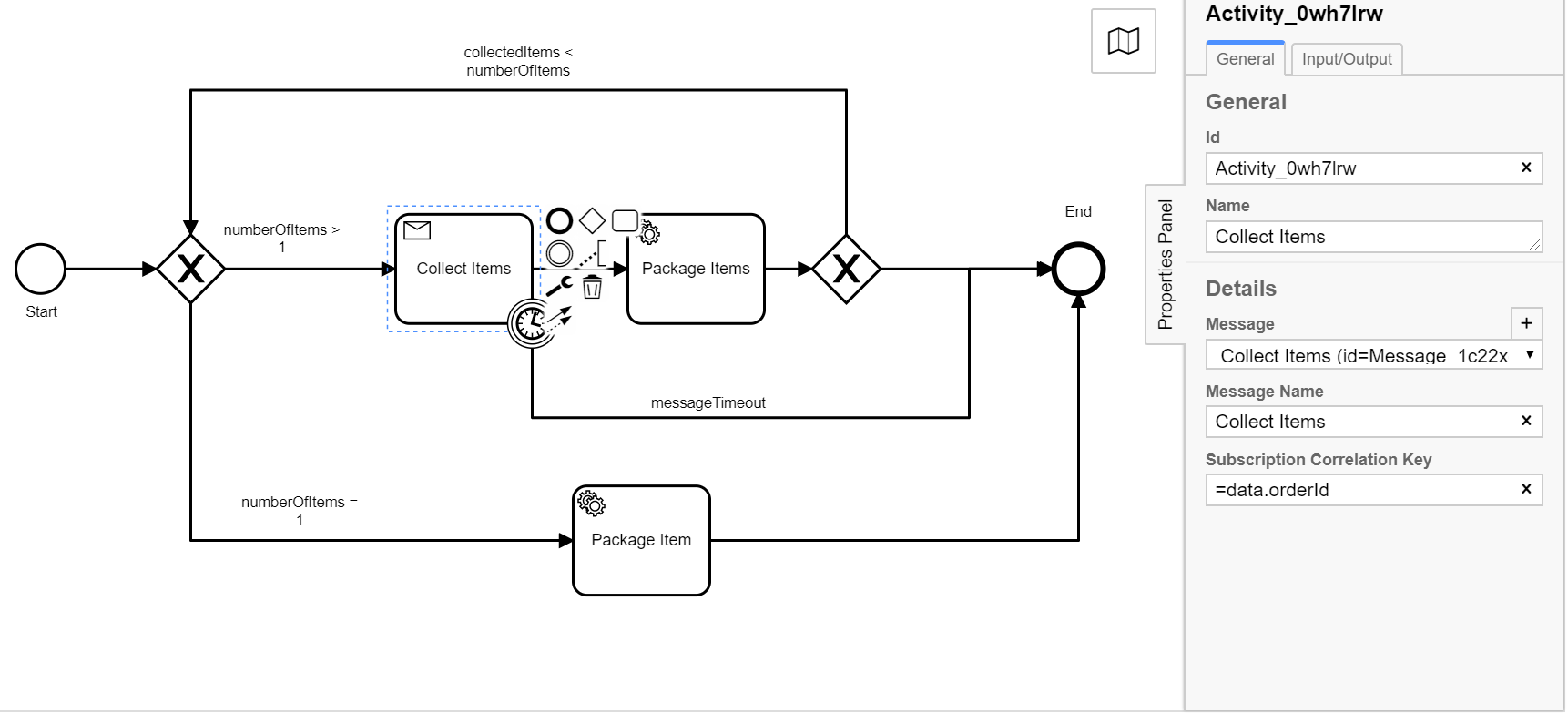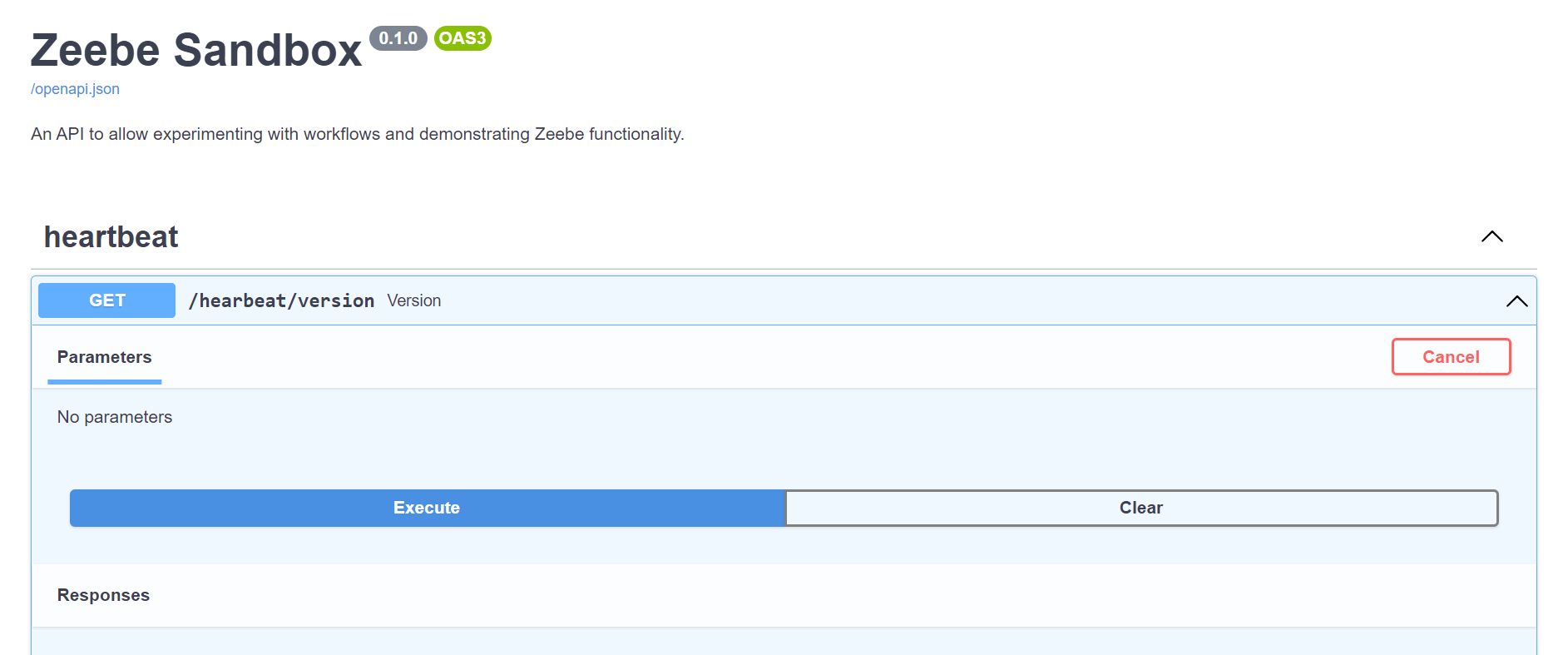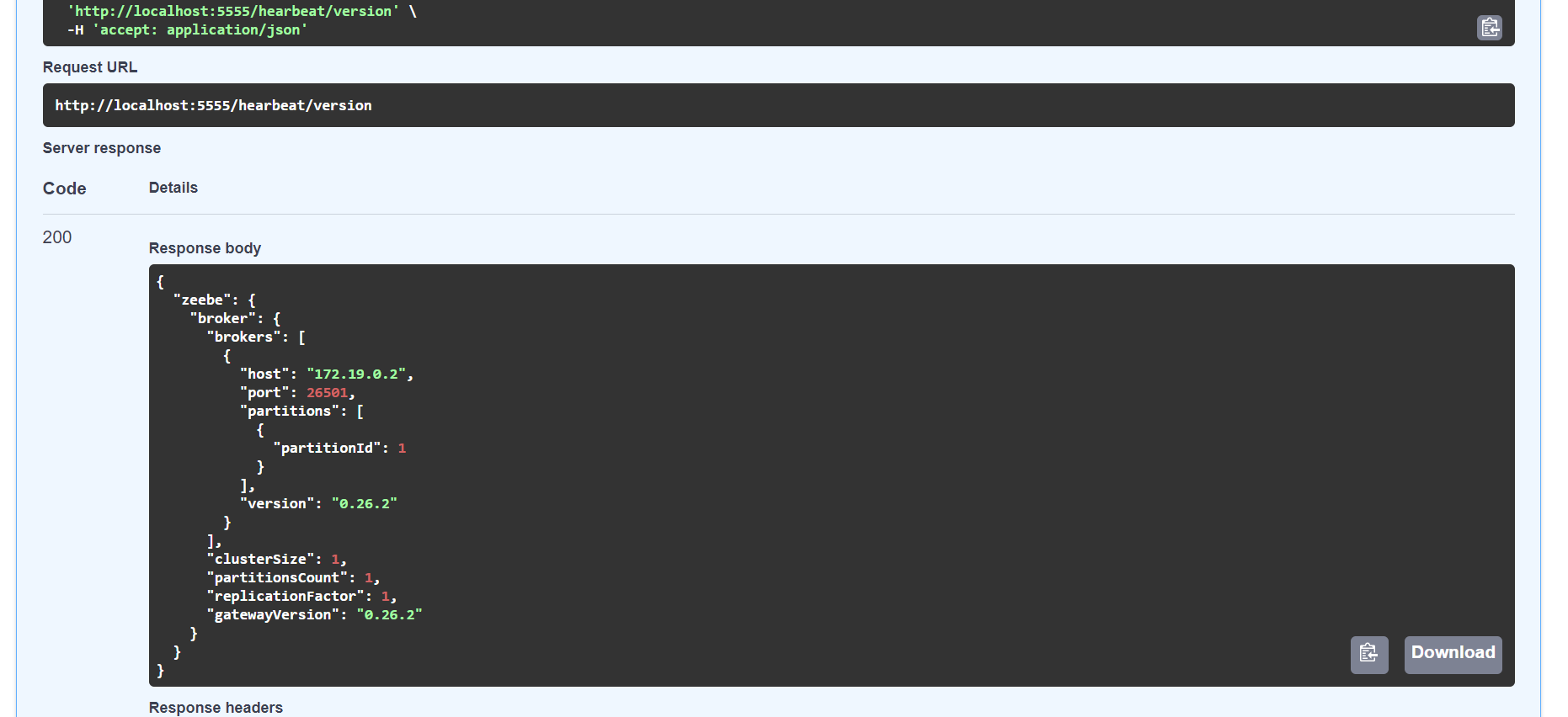A FastAPI python sandbox for Zeebe to deploy workflows, run instances and publish messages. This dockerised app runs Zeebe Simple Monitor, a single node Zeebe broker and a FastAPI python container to allow exploration/investigation of Zeebe features and workflows.
- Deploy Zeebe workflows from .bpmn files. 💖
- Run workflow instances. ⚡
- Publish messages. 🔥
- Displaying features in Zeebe such as:
- Message aggregation. 🌞
- Dynamic timers using expression language. 🍀
- Distinction between "errors" and "failures" in Zeebe workflows and how to handle them in task exception handlers. 🐋
- Integration with FastAPI. 💪
Use docker compose to get the containers up:
docker-compose upNote:
- Since it takes a little time for the Zeebe broker to come online, it is ok to see the zeebe-runner container coming up and retrying. It will eventually connect to the broker and stay up.
- If one makes any changes to the zeebe-runner python code, currently, it is needed to stop and start again for the service to resume running again.
Navigate to http://localhost:5555 and check out zeebe-runner endpoint:
Also you can navigate to http://localhost:808 to access Zeebe Simple Monitor.
Select a .bpmn file containing the desired workflow by browsing for it. In this case the collect-items.bpmn. Then click on Execute.
On Zeebe Simple Monitor, the deployed workflow can be seen.
In the case of collect-items.bpmn the bpmn_process_id is test-packaging.The dictionary in the response area contains default values of necessary variables used in the workflow and utilised by tasks.
It helps to take a look at the workflow and the annotations on the arrows/paths for these variables to make sense:
collectedItems: This variable is used to keep track of items during aggregation loop and is only used during the aggregation process. If variable "numberOfItems is bigger than 1, the flow will go through the Collect Items and Package Items taks and loop there (aggregate in a list). For every completed loop, the value of collectedItems is incremented, until the condition at the next gate for moving to the end is satisfied.
"numberOfItems: A number of items are expected to arrive at the Collect Items task and correlate with the orderId that initially opened a message correlation event. By default, this variable is set to 3, which means 3 messages need to be published so that the aggregation loop is completed 3 times and the condition at the last gate for moving to the end is met.
data: It is made-up data, which contains the field of interest (i.e. orderId) that is used for message correlation.
aggregateList: An empty list used for aggregating data.
messageTimeout: Using expression language, one can pass variable time durations, in the correct format to configure the time-out duration for message correlation. The concept behind this time-out is so the flow does not get stuck at the Collect Items task if the messages never arrive or get correlated.
failureHandlerTest: If set to true, allows one to simulate a failure condition only in the Package Item task. This means numberOfItems must be set to 1.
errorHandlerTest: If set to true, allows one to simulate an error condition only in the Package Item task. This means numberOfItems must be set to 1.
To publish messages, the message name and the correlation key are needed. Furthermore, in the Request Body field a dictionary of variables can be added to be published with message:
These parameters have been set previously. In this case using Zeebe Modeller:
Allows getting info on the Zeebe broker, when it is up and running:


